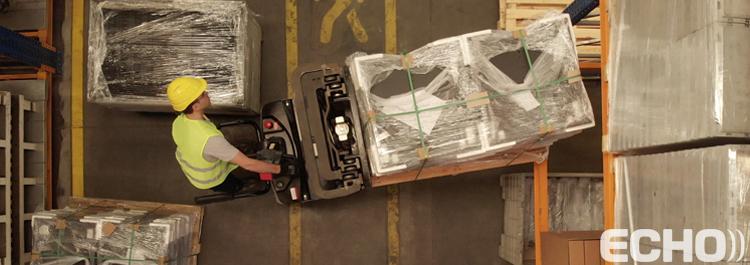Not every shipment arrives at its destination in perfect condition. Most of the time the damage is due to inadequate packaging or improper handling. Either way, damage does happen, and knowing how to report it through the notification process is essential. This article will define what concealed damage is, explain how to work with Echo to notify the carrier of concealed damage, and de-bunk concealed damage misconceptions. This is the second installment of our three-part series on damages and claims. Read our first blog post, “How to Notate Damages and Shortages on the Bill of Lading and Proof of Delivery.”
What is concealed damage?
Concealed damage is when damage that could not have been determined at the time of delivery is discovered by the consignee (for example, if there was no visible damage to the outer packaging, but damage was discovered once a carton was opened). Carrier liability can be difficult to prove given that other parties came into physical contact with the freight.
How do I report concealed damage?
To report concealed damage, you must notify your Echo sales representative in writing via email within five business days of delivery and file a claim within nine months of the date of delivery. Include specifics about the type of damage (examples might be units crushed, dented, or scratched) and quantity of damaged units. The sales rep needs to pass on the consignee’s contact information to the carrier in the event the carrier decides to schedule an inspection. You should also supply a copy of the commercial invoice to your Echo sales rep for documentation.
The following list includes what you’ll need to email your Echo sales rep to report concealed damage:
- Type of damage
- Quantity of damage (in units)
- Consignee’s contact information
- Copy of the commercial invoice
- Photographs of the damaged packaging and freight
As with all damage claims, the consignee must retain the freight until the claim is resolved. For all claims, please include as many detailed photographs of the damage as possible. Take photos of the packaging to show whether it was adequate to withstand travel. Most importantly, take photos of the damaged freight and any specific areas of damage. Be sure to maintain the freight and packaging throughout the claims process.
What are the most common misconceptions around concealed damage?
When concealed damage is first discovered, it is important to take action immediately and start the notification process. Avoid delays by steering clear of the following misconceptions around concealed damage.
Myth: Discovering damage after signing for the delivery receipt or proof of delivery and opening a carton makes it visible damage.
Fact: If there is no visible damage to the outer packaging, but the consignee discovers damage to the product after opening the carton, this is still concealed damage. However, as long as the consignee notifies an Echo sales rep within the five-day window mentioned above, he or she can still file a claim, which will then notify the carrier of the concealed damage, but the claimant must file the claim within nine months of the date of delivery.
Myth: If concealed damage is reported within the timeframe specified by NMFC Item #300135, the carrier has to participate in a settlement.
Fact: If there is a question of liability and it cannot be determined which party is at fault, the laws allow the carrier to participate in a settlement without an admission of liability. However, it does not obligate that carrier to do so. When concealed damage is not clearly accountable to the carrier, a likely outcome is the carrier offering a one-third settlement of the amount claimed. This reflects even accountability to the three parties that came in physical contact with the freight—the carrier, shipper, and consignee.
Myth: Contacting Echo to notify us about concealed damage is all that is required to file a claim.
Fact: Per the guidelines outlined in NMFC Item #300134, notifying Echo (or the Echo claims department) is the first step in filing a claim against the carrier company. Submitting the information listed above to Echo enables your Echo sales rep to reach out to the carrier company’s operations department on your behalf. This satisfies the notification process and allows your claim to move forward. However, the claimant must file the claim within nine months of the date of delivery.
Work with Echo to File Your Claim
Communication and transparency are essential to addressing shipment damages. If your shipment is affected, follow the instructions outlined above to strengthen your claim and resolve the issue. Our established relationship with carrier partners ensures fairness and a hands-on approach as we help you navigate the claims process and verify the proper steps are followed. For other claim types, you can contact an expert at Echo to support you through the process.
Contact an Echo representative today at 800-354-7993 or info@echo.com, or request a quote for a shipment.
Informational



